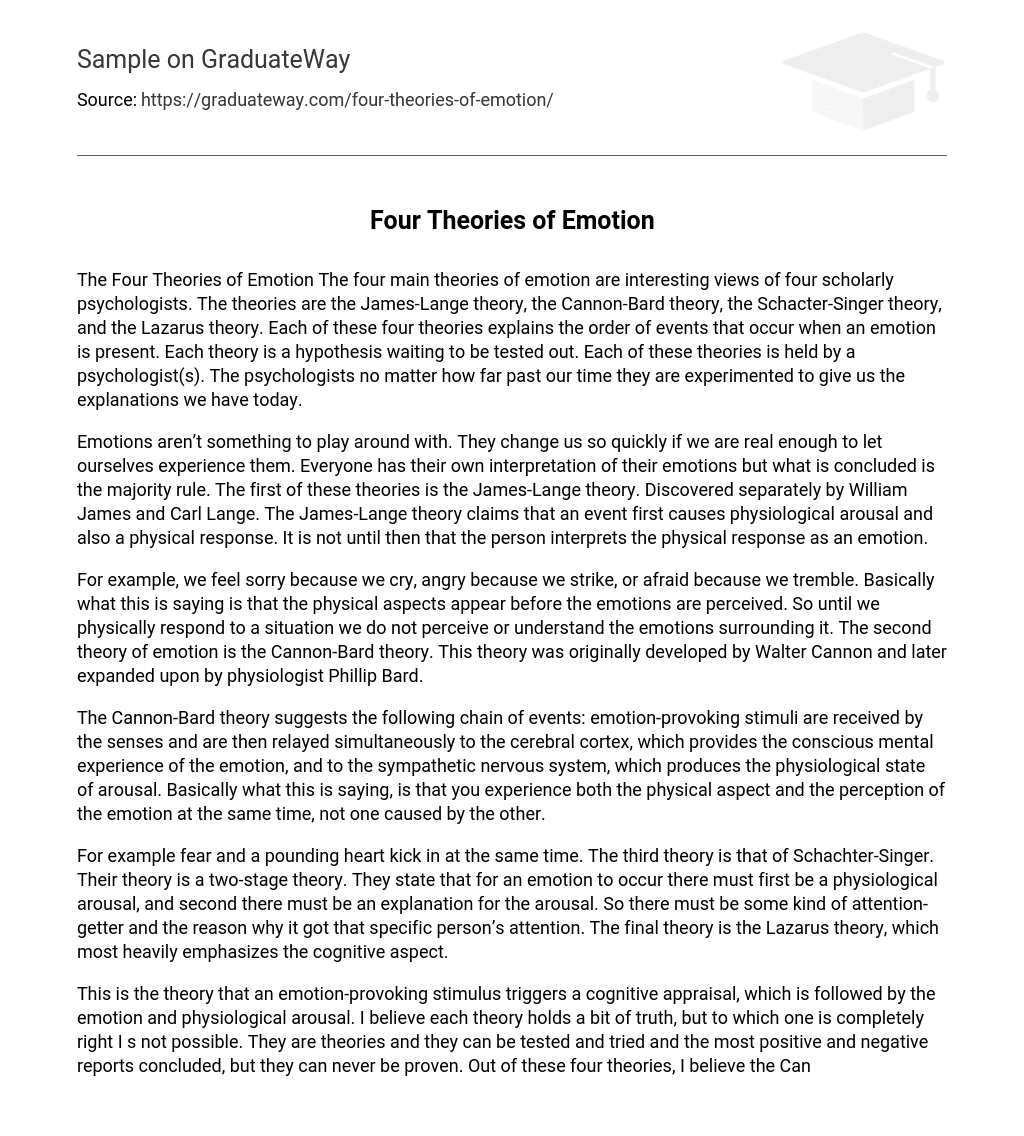The James-Lange theory, Cannon-Bard theory, Schacter-Singer theory, and Lazarus theory are the four main theories of emotion. These theories have been developed by scholarly psychologists and offer intriguing perspectives. They describe the sequential events that occur during the experience of an emotion. Each theory can be tested as a hypothesis. Psychologists throughout history have embraced these theories and conducted experiments to provide us with the explanations we have today.
Emotions possess the ability to deeply impact us and should not be disregarded. When we fully embrace our emotions, we undergo significant changes. While individuals have their own unique understanding of their emotions, what truly matters is the overall agreement among people. The James-Lange theory, independently discovered by William James and Carl Lange, offers a prominent explanation for emotions. This theory suggests that an event initiates physiological arousal and subsequent physical reactions. It is only after experiencing these bodily sensations that individuals interpret them as specific emotions.
The physical reactions we experience, such as crying when sad, striking when angry, or trembling when fearful, suggest that these reactions happen prior to our awareness or understanding of the emotions. This is known as the Cannon-Bard theory of emotion, which was first introduced by Walter Cannon and later expanded upon by physiologist Phillip Bard.
The Cannon-Bard theory proposes that emotions are triggered by stimuli that elicit responses in both the senses and the sympathetic nervous system. These stimuli are sent to both the cerebral cortex, resulting in conscious perception of the emotion, and to the sympathetic nervous system, leading to physiological arousal. In essence, this theory suggests that the physical and perceptual aspects of an emotion occur simultaneously rather than one causing the other.
One example of simultaneous physiological responses and emotions is fear and a pounding heart. The Schachter-Singer theory proposes a two-stage process for emotions. According to this theory, emotions require both physiological arousal and an explanation for the arousal. This explanation involves an attention-getter and the specific reason that caught the person’s attention. On the other hand, the Lazarus theory emphasizes the cognitive aspect of emotions.
According to the theory, an emotion-provoking stimulus initiates a cognitive appraisal, leading to the emotion and physiological arousal. Although each theory holds some validity, it is impossible to ascertain one as entirely correct. These theories can be assessed and analyzed, resulting in positive and negative findings, but they are inherently unprovable. Amongst the four theories, my preference lies with the Cannon-Bard theory that proposes simultaneous occurrence of emotion and physical arousal.
I believe that sometimes my emotions happen simultaneously with the stimulus, without one necessarily causing the other. In this paper, I favor the Cannon-Bard theory because it aligns with my own experiences, unlike the other theories. While nothing is definitive or proven, Cannon and Bard have my support.





